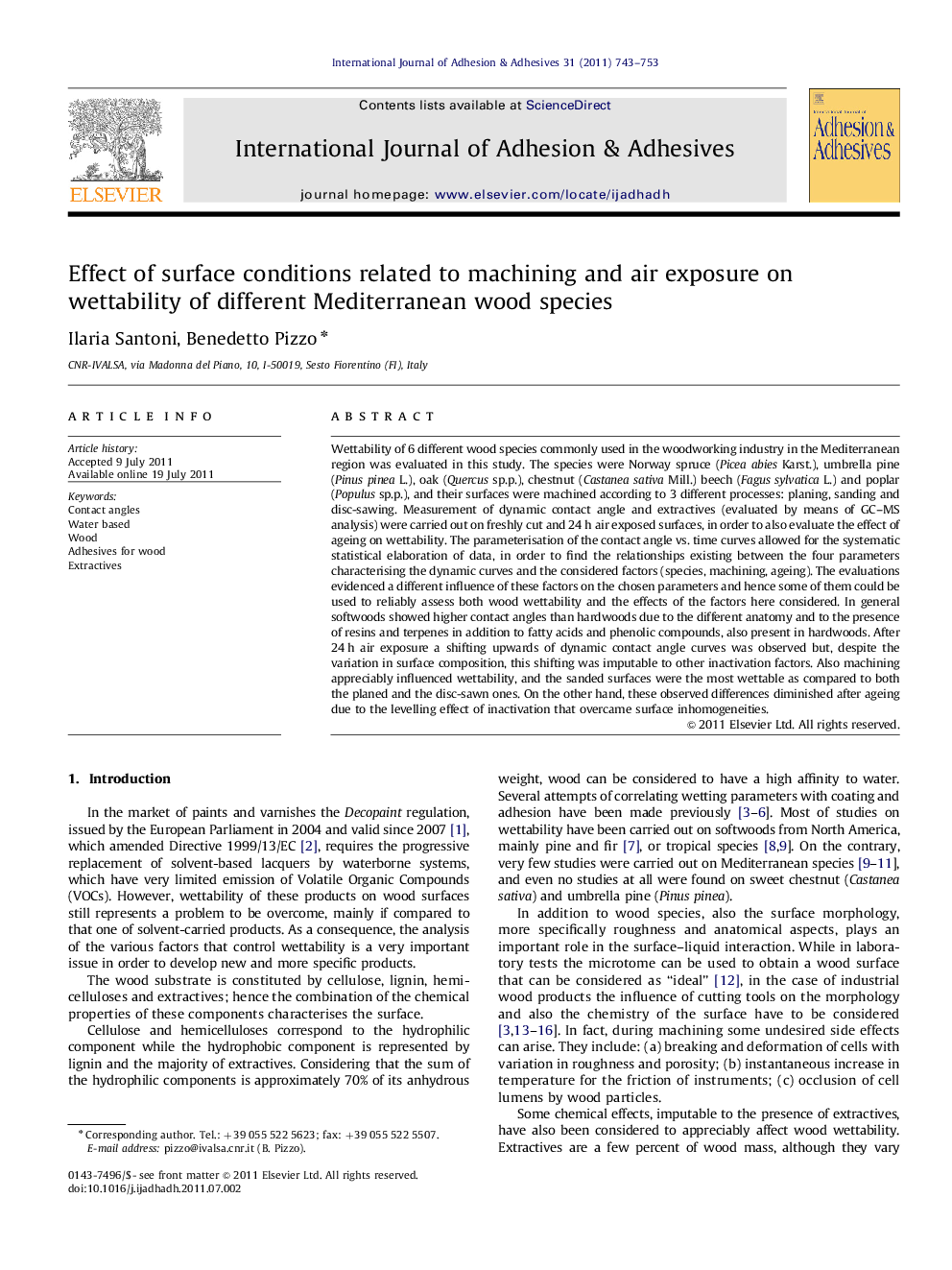| Article ID | Journal | Published Year | Pages | File Type |
|---|---|---|---|---|
| 773454 | International Journal of Adhesion and Adhesives | 2011 | 11 Pages |
Wettability of 6 different wood species commonly used in the woodworking industry in the Mediterranean region was evaluated in this study. The species were Norway spruce (Picea abies Karst.), umbrella pine (Pinus pinea L.), oak (Quercus sp.p.), chestnut (Castanea sativa Mill.) beech (Fagus sylvatica L.) and poplar (Populus sp.p.), and their surfaces were machined according to 3 different processes: planing, sanding and disc-sawing. Measurement of dynamic contact angle and extractives (evaluated by means of GC–MS analysis) were carried out on freshly cut and 24 h air exposed surfaces, in order to also evaluate the effect of ageing on wettability. The parameterisation of the contact angle vs. time curves allowed for the systematic statistical elaboration of data, in order to find the relationships existing between the four parameters characterising the dynamic curves and the considered factors (species, machining, ageing). The evaluations evidenced a different influence of these factors on the chosen parameters and hence some of them could be used to reliably assess both wood wettability and the effects of the factors here considered. In general softwoods showed higher contact angles than hardwoods due to the different anatomy and to the presence of resins and terpenes in addition to fatty acids and phenolic compounds, also present in hardwoods. After 24 h air exposure a shifting upwards of dynamic contact angle curves was observed but, despite the variation in surface composition, this shifting was imputable to other inactivation factors. Also machining appreciably influenced wettability, and the sanded surfaces were the most wettable as compared to both the planed and the disc-sawn ones. On the other hand, these observed differences diminished after ageing due to the levelling effect of inactivation that overcame surface inhomogeneities.
